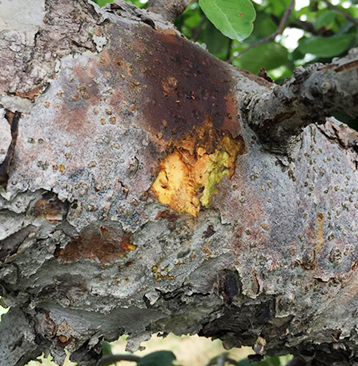
Rainfall promotes widespread dispersion of the bacteria through splashing. The bacteria are spread to blooms, foliage, and twigs by insects (i.e., honeybees, ants, beetles). Droplets of bacterial ooze will appear on the canker surfaces of previously infected trees. Trauma Blight are wounds to foliage or shoots from hailstorms, high winds, or driving rain can also serve as an entry point for the bacteria.įire blight bacteria becomes active in the spring when temperatures are above 65 degrees and humidity is 60%.
#Plum tree fire blight cracked#
Branch cankers become sunken and darkened and eventually cracked and creviced. Droplets of milky tan-colored bacterial ooze may be visible on diseased tissue.Ĭanker Blight infection move downward from twigs and blossoms, localized cankers form on the trunk and limbs. Blossom blight can reduce the current and following year’s fruit crop. The stem may also ooze a watery exudate.īlossom Blight makes the blossoms appear water-soaked and turn brown. The twig often will form a cane-like crook at the tip.

In the spring, infected leaves, generally the youngest on the shoot, quickly wilt and turn dark brown or black but remain attached to the twig.

Twig Blight is the most obvious symptom of fire blight. The most common infection sites include twig, blossom, canker, and wound infections.

Infections occur in different parts of the tree and enter the plant by different means. Quince, mountain ash, spirea, hawthorn, pyracantha, and cotoneaster are also susceptible to fire blight. This disease can result in reduced fruit, loss of limbs, or even tree death. Fire blight, a destructive bacterial disease, is noticeable when infected leaves suddenly turn brown as if scorched by fire. Backyard fruit growers often have a serious disease on apples, pears, crabapples, and even some ornamentals.


 0 kommentar(er)
0 kommentar(er)
